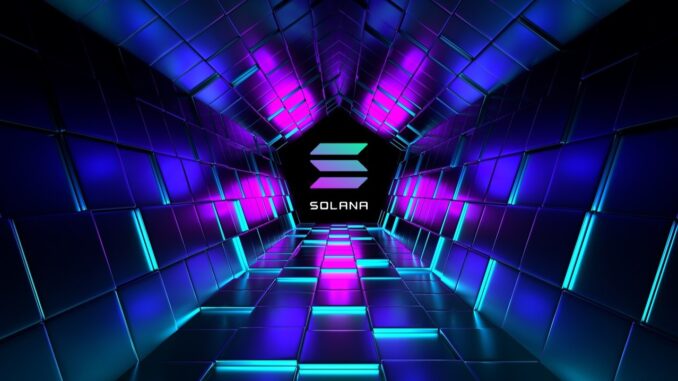In a recent and thought-provoking announcement, Solana, a blockchain titan, has set a new course in the world of blockchain technology. Anatoly Yakovenko, the co-founder of the company, has unequivocally rejected the idea of adopting Layer 2 solutions, a path many in the blockchain space have taken.
Instead, Yakovenko is championing a direct Layer 1 scaling approach. His vision is not just about scaling for the sake of growth; it’s about achieving unprecedented heights in blockchain efficiency and innovation.
The vision of Anatoly Yakovenko: Scaling layer 1 for unmatched efficiency
Yakovenko’s post on the X platform vividly outlines Solana’s dedication to scaling Layer 1 directly. In his words, the end goal for the company is to synchronize a global atomic state machine at the fastest speed possible, as permitted by the laws of physics. It is a clear departure from the conventional discourse in the blockchain community, where Layer 2 solutions, such as side chains and zero-knowledge proofs, are often touted as the next big thing.
While acknowledging the innovation behind Layer 2 solutions, Yakovenko points out that these technologies operate as external execution environments. They are detached from Solana’s core Layer 1 atomic state machine. The detachment means that, although beneficial, they do not contribute to expanding the company’s crucial atomic global state machine. Essentially, they lack the seamless integration with the broader Layer 1 state that Solana is striving for.
Solana’s path: Why reject layer 2 solutions
The question arises: why is Solana, led by Yakovenko, so adamant about focusing solely on Layer 1 scaling? The answer lies in the belief that true innovation and efficiency in blockchain technology can only be achieved through the enhancement of the single virtual machine instance on Layer 1. Solana foresees future hardware upgrades as a key to achieving the goal.
Yakovenko’s stance is a bold one, especially in a landscape teeming with Layer 2 solutions. However, he believes that Layer 2 solutions, while innovative, ultimately lead to a fragmentation of the ecosystem. The fragmentation can lead to complexities and inefficiencies that go against the very nature of blockchain technology – creating a unified, efficient, and transparent system.
The future of Solana and the cryptocurrency landscape
As we look into Solana’s trajectory, it’s clear that the platform is steering away from the prevalent narrative of adopting Layer 2 solutions. the company’s focus is on scaling Layer 1 directly, to strengthen its atomic global state machine. The move is not just about being different; it’s about a firm commitment to innovation and pushing the boundaries of blockchain technology.
In 2023, the companywas among the top-performing cryptocurrencies, gaining significant attention from global investors. The interest is not unfounded, as investors are keenly observing the network’s future potential and other core updates. As of the latest reports, the price of Solana has seen an impressive rise of 2.67% over the last 24 hours, reaching $101.81. Over the last 30 days, it has added over 70% to its value, although there has been a slight decline of about 4% the week.
Solana’s approach represents a significant shift in the blockchain paradigm. By focusing on Layer 1 scaling, Solana is not just enhancing its platform; it is setting a precedent in the blockchain community. The strategy may encourage other platforms to revisit their approaches to scaling and efficiency.
Conclusion
Solana’s commitment to scaling Layer 1 directly under Yakovenko’s vision marks a pivotal moment in blockchain technology. As the cryptocurrency landscape continues to evolve, Solana’s bold stance positions it as a trailblazer in pursuing unmatched scalability and efficiency. The development is not just significant for Solana but for the entire blockchain community, signaling a potential shift in how blockchain technology will grow and evolve in the coming years.





